RAKE's history since 1867
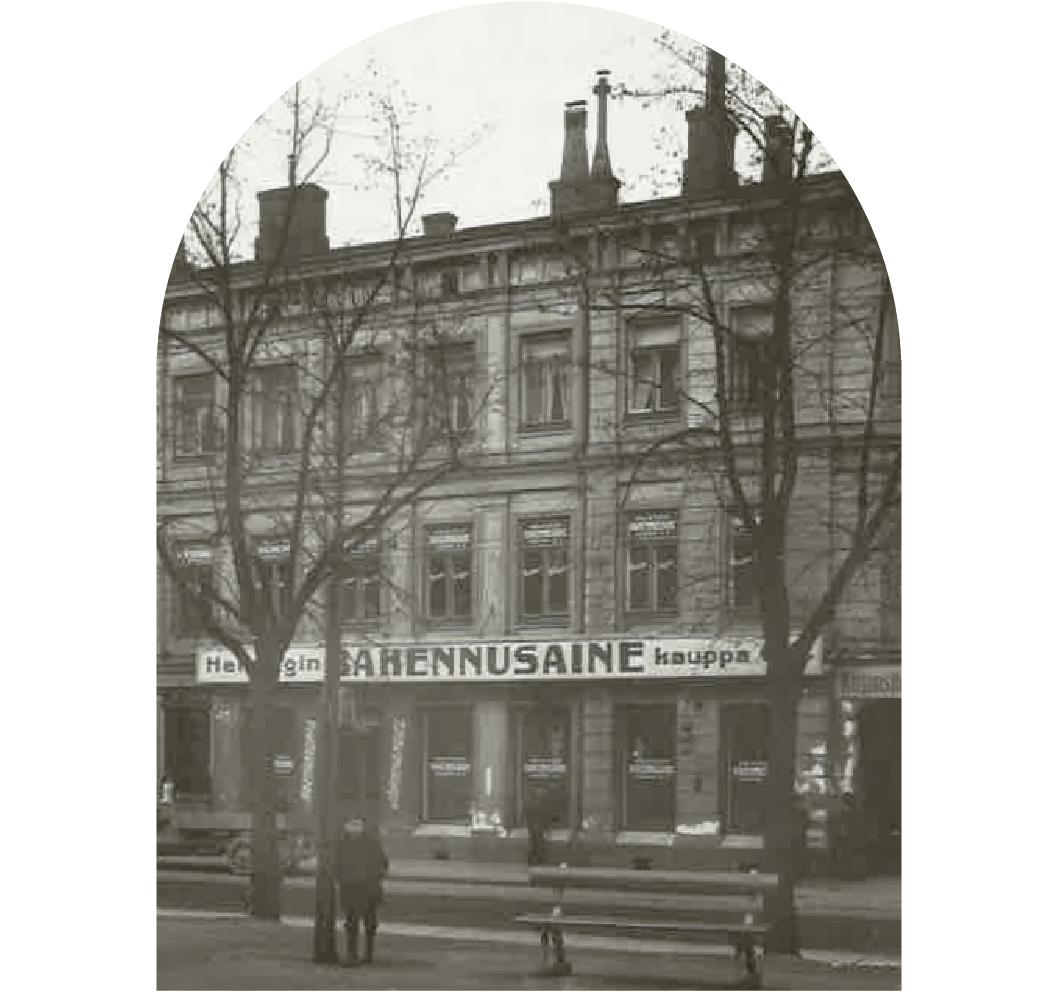
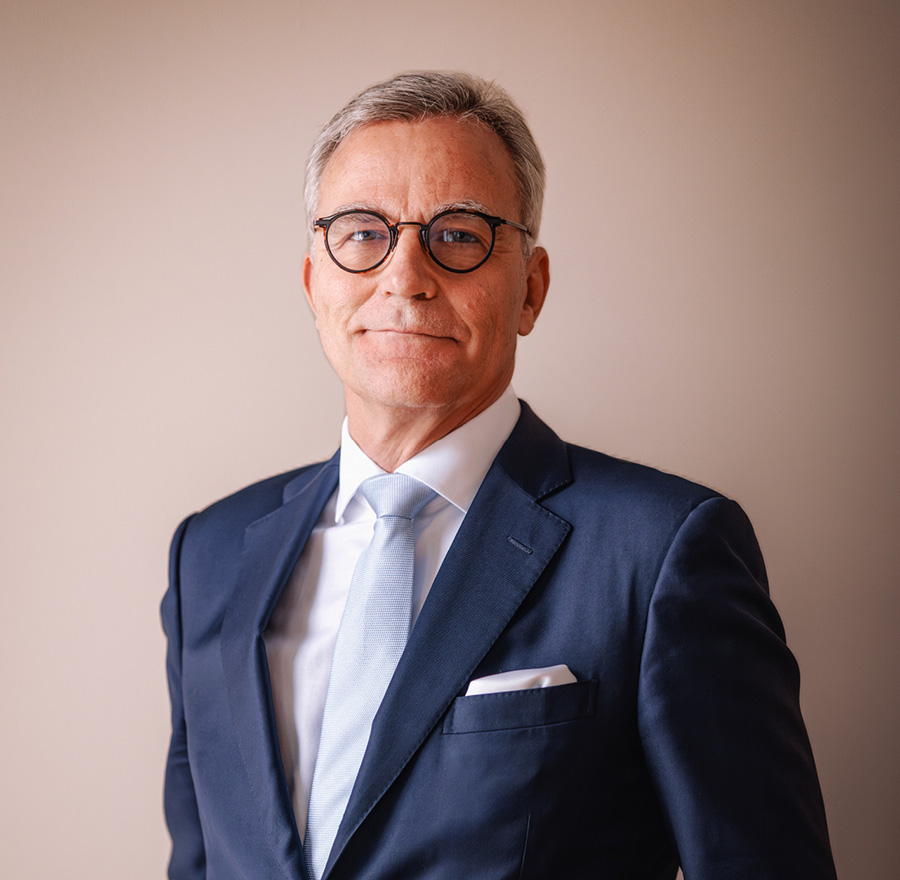
”Rake's long and diverse history shows that adapting to change is absolutely fundamental in order to ensure continuity and value-creation - It's our way of protecting the Future from the Past!"
– Kenneth Cederberg, Managing Director, Rake Oy
1867
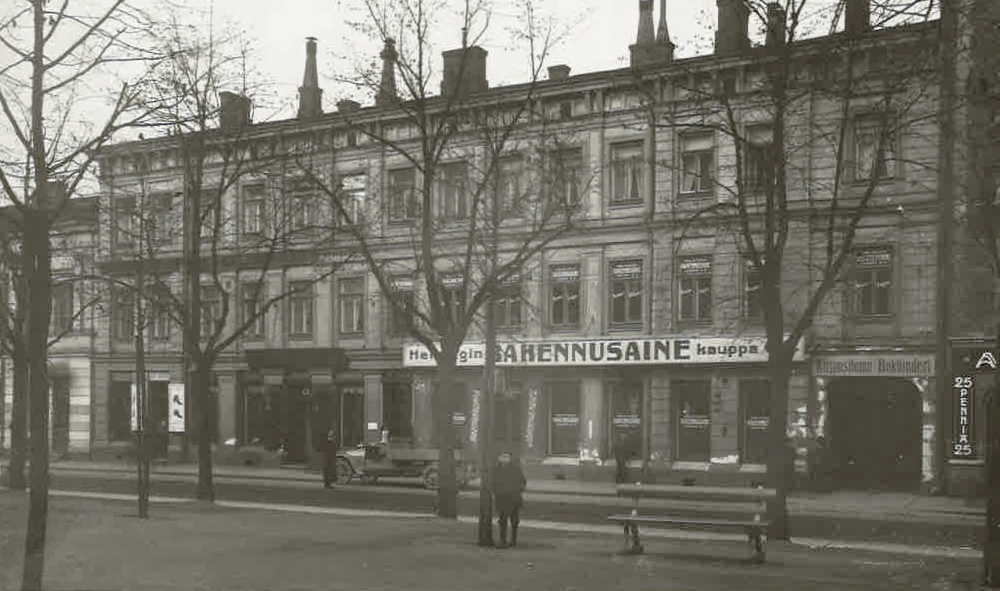
When Israel Nyman in 1867 founded a hardware and ship chandler’s store in his house along Itäinen Heikinkatu (now Mannerheimintie), Helsinki was still a very modest capital, with a population of just over 30,000.
The first decades of the 20th century
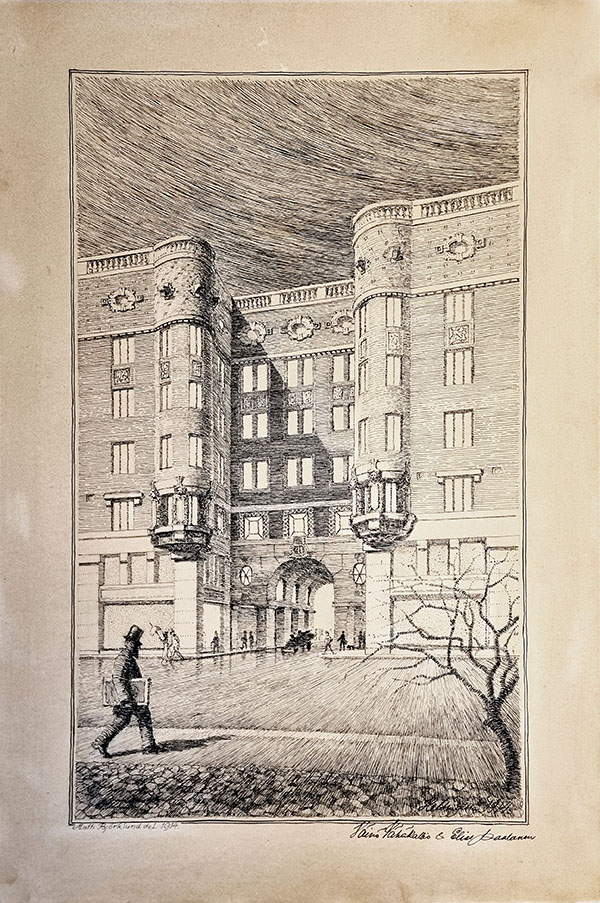
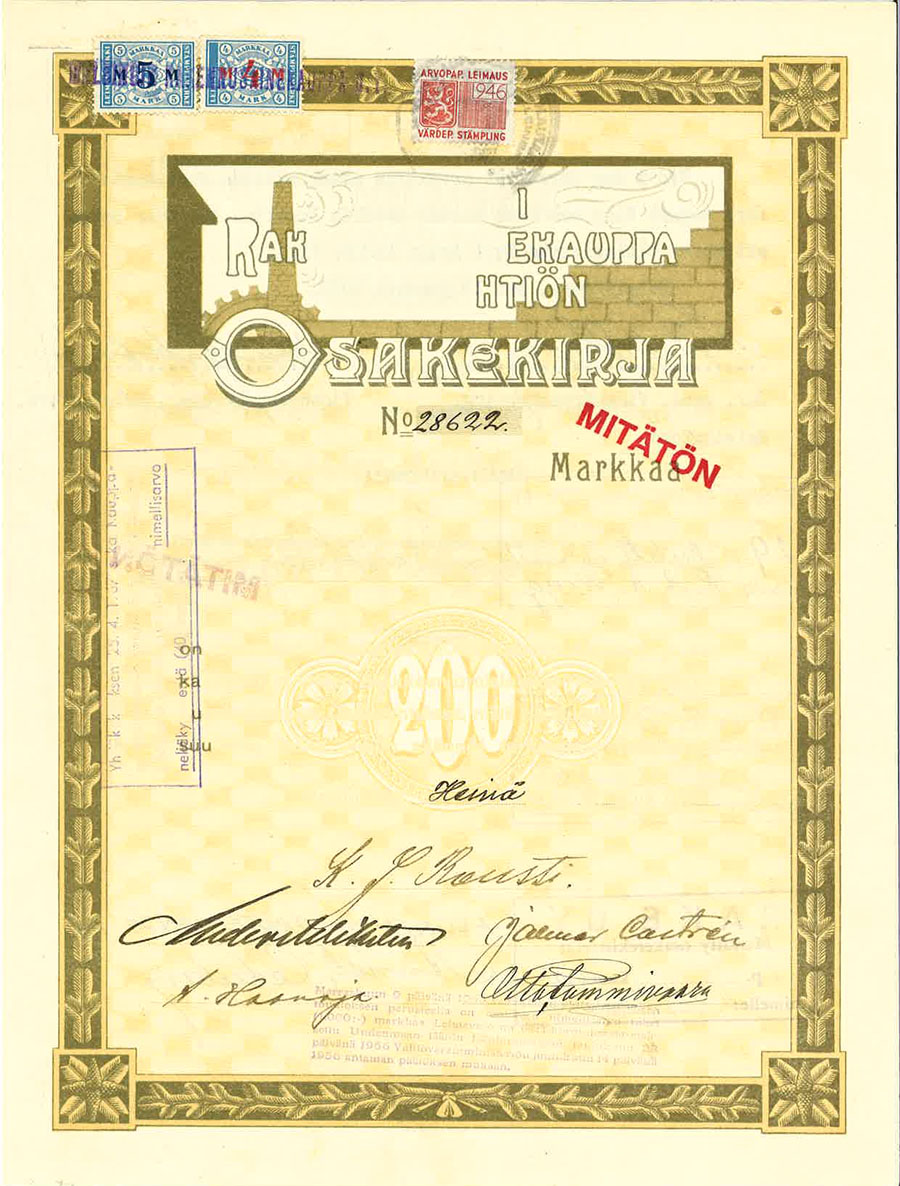
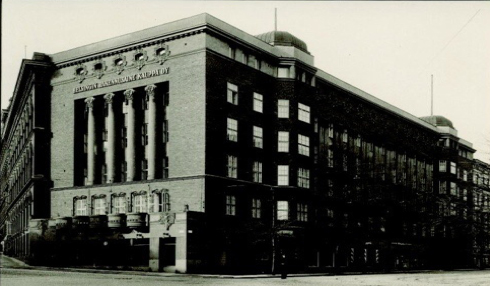
After Israel Nyman’s death in 1903, his heirs sold the store to merchant Pekka Rissanen, and the business was renamed to Helsingin Rakennusainekauppa P. Rissanen. In the same year, the first branch was established on Hämeenkatu.
In 1906, Alwar Niklander from Vaasa (managing director 1906–1947) started as the company’s managing director, and the company was officially registered in the trade register as Helsingin Rakennusaine Kauppa HRK Oy.
The company’s industrial activity began when Koskensaari nail factory was acquired in 1910.
In 1912, bank director Anders Wiksten (board member 1912–30 and chairman 1930–36) was appointed as a member of the company’s board, starting the ongoing succession of the current owner family in Rake.
As the company’s business grew, it was decided that its own premises for the main store and the head office was required. In 1912, the properties at Aleksanterinkatu 52 and Pohjois-Esplanaadinkatu 41 were acquired and a plan for a shopping alley connecting the streets (now Keskuskatu) was drawn up. Unfortunately, due to the raging World War I, the necessary building permits and construction loans were never obtained, and the project had to be abandoned.
Instead, in January 1917, the properties on the corner of Läntinen Erottajankatu and Bulevardinkatu were acquired. The Neo-Renaissance-style property on Erottajankatu, built in the early 1880s, was designed by architect F.A. Sjöström. The Art Nouveau-style building on Bulevardi side, completed in 1912 was designed by architect Lars Sonck.
The properties were eventually combined and renovated so that in 1920 the company’s head office and building supplies store moved to Bulevardi. The entity was developed into a stylish department store selling building supplies, tools and household items. Offices and a guest house were renovated in the upper floors of Bulevardi 2–4.
The company’s expansion continued in the 1920’s with new branches opening in Töölö, Humalisto, Punavuori, Lahti and Hämeenlinna. In March 1927, Rake Oy was listed on the Helsinki Stock Exchange as the first and, for a long time, the only company in the Retail sector.
1930's: RAKE OY - Decade of diversification
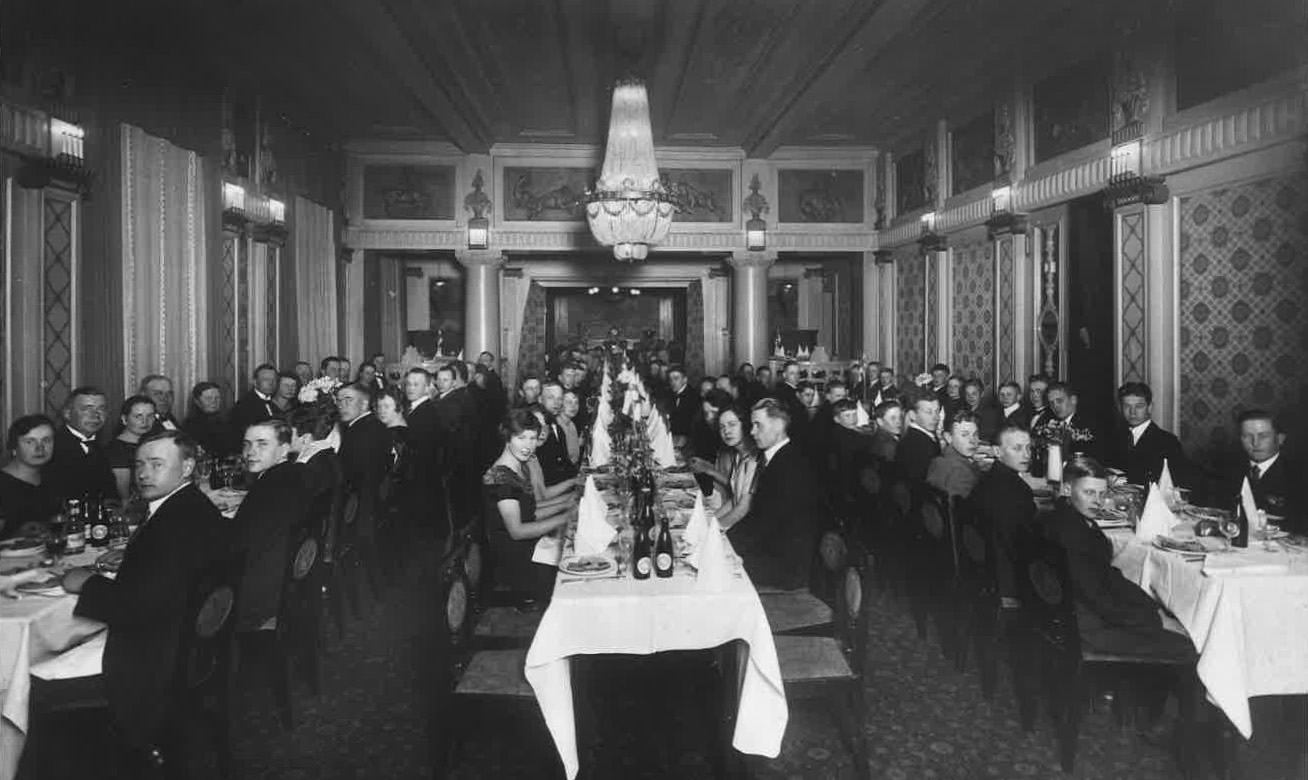
When the company’s official name was changed to Rake Oy in 1932, the number of branches had grown to seven in Helsinki with two additional stores outside the capital. In 1938, 88 hectares of land was acquired in Jokela and Kallioistenmaa Osakeyhtiö was founded to operate a brick factory.
The Guest House in the Bulevardi property was transferred to Rake’s ownership in 1932. The operation was continued as it benefitted the company to offer its rural customers and sales representatives an accommodation. When the Palladium restaurant came under Rake’s control, it was decided to combine them into a modern hotel and restaurant, which was named Klaus Kurki in 1938. Its interior was inspired by the epic of Kalevala and Finnish nature.
The company’s turnover exceeded 100 million Finnish markkas.
1940–60: Building a growing Helsinki
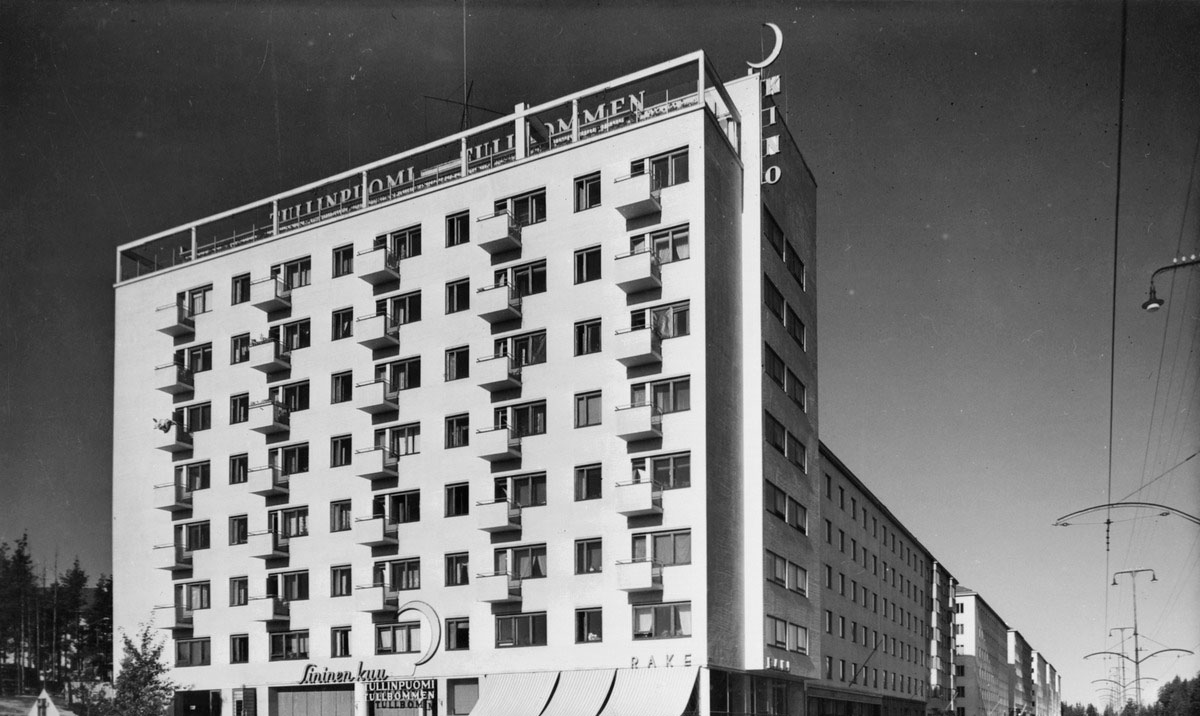
After the end of the Second World War, reconstruction was brisk and as Helsinki’s population grew, many new apartments were needed. The hardware stores were very profitable and there was plenty of construction work. In 1943, Rake opened Restaurant Tullinpuomi on Mannerheimintie. The company also participated in several residential construction projects as a building material supplier and a founding partner.
In 1947, Anders Wiksten’s son, Consul General of Austria, Antti Kivilahti (Managing Director 1947–1967) became the company’s Managing Director.
To complement Rake’s traditional hardware store, a delicatessen shop, Raken Herkku, was opened in the Bulevardi Department Store.
Rake now had 16 stores in Helsinki and new stores in Karkkila and Hyvinkää. The company had further acquired Helsingin Rauta Oy.
1970's: Ideas from the world to Finland and from Finland to the world

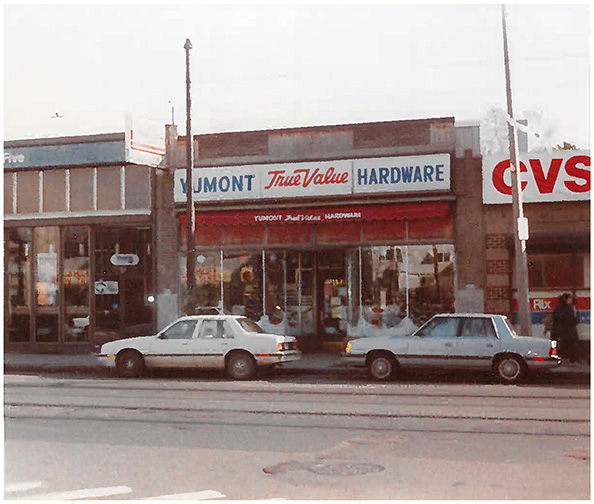
Klaus Cederberg (M. Sc. (Econ), Honorary Consul General of Austria; Managing Director 1968–1988), the husband of Antti Kivilahti’s daughter Anneli (board member 1968–2013) was appointed Managing Director in 1968. He initiated modernization of traditional hardware stores and started a strong internationalization drive for the company. Rake’s head office moved from Erottaja to Juvanmalmi in Espoo, and the office space in the Erottaja property was rented out. Furthermore, the hotel and restaurant operations were leased to HOK 1974.
A concept imported from the United States, Maxi-Market, the country’s first hypermarket located outside the urban area, was opened in Espoo’s Leppävaara in 1971. It was a very successful joint venture together with Osuusliike Elanto. In 1973, another Maxi-Market was opened in Karhula. The company’s sales exceeded 200 million marks and the number of employees reached 1,000.
The Era of Internationalization: A chain of hardware stores on the East Coast of United States and Trading Houses in Southeast Asia
After the 1970’s oil crisis, construction plummeted and thus the profitability of hardware stores began to deteriorate, therefore search for new business operations became essential. Rake’s internationalization began in 1978 as the first hardware stores, Yumont Hardware and Warren Electric, were acquired in Boston, US.
To meet the needs of Rake’s rapidly growing and internationalizing retail trade, direct sourcing from China and Southeast Asia was established through a network of Trading Houses in Hong Kong and Singapore.
The 1980's: A decade of change
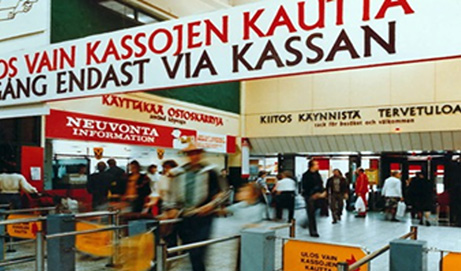
Weak profitability of the domestic hardware stores required difficult and drastic decisions: Maxi Market was sold in 1982 and Erottaja Department Store was closed at the end of 1983. The department store was renovated into offices and the Klaus Kurki hotel was expanded from 70 rooms to 139 rooms. Rake’s head office also returned to Erottaja.
Rake’s domestic hardware store business was divested in 1987 just before the recession in Finland hit the construction and real estate sectors in the early 1990’s. The decisions to sell Maxi Market and the company’s 120-year-old hardware business were not easy, but time has shown that they were wise and necessary measures.
As the Helsinki Stock Exchange changed its rules, Rake Oy’s shares were de-listed in 1986 without a redemption procedure. The share was quoted on the Brokers’ List until the end of August 1992.
1990's: Internationally operating, diversified Group of Companies
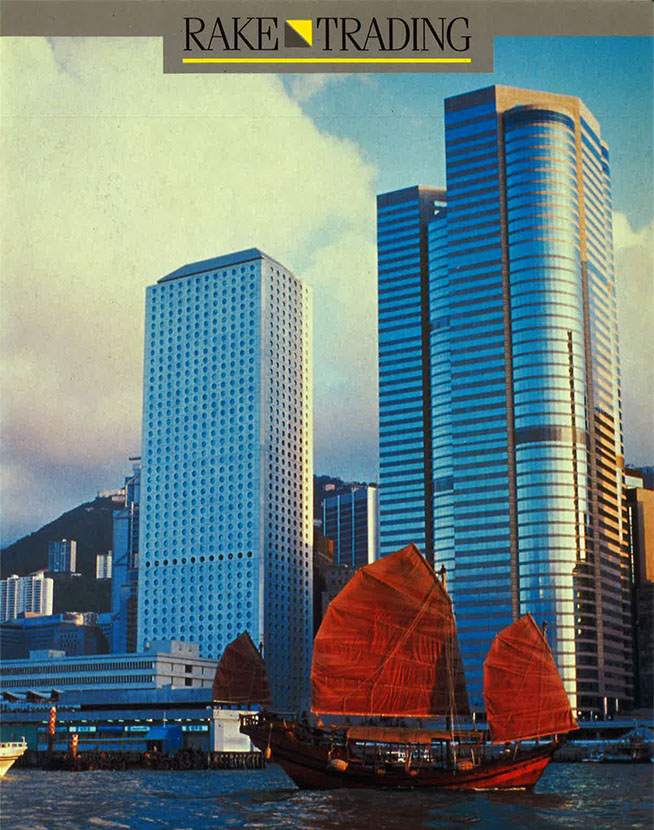
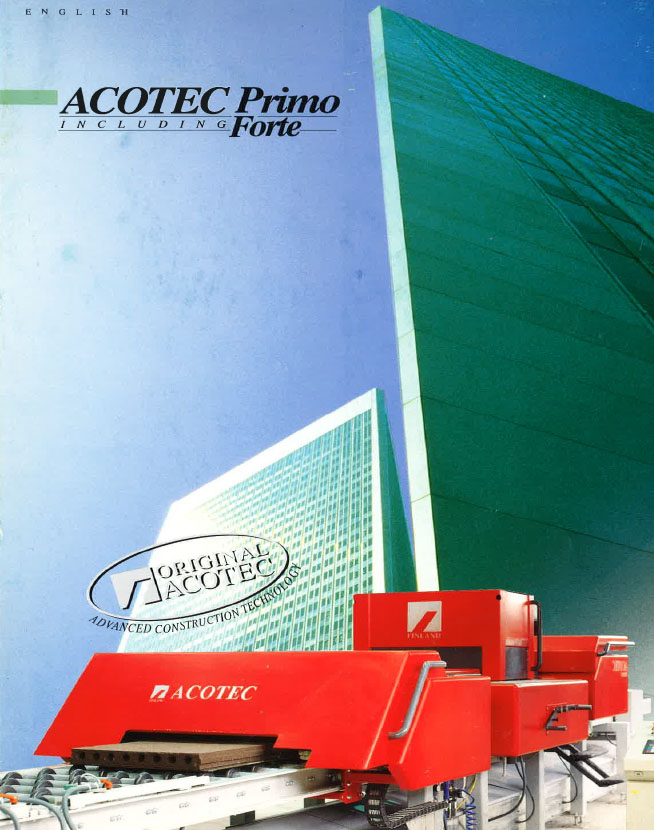
The group included several internationally operating companies, such as Rake Trading and Acotec, which focused on construction material technology.
In 1988, Kenneth Cederberg (M. Sc. (Econ), MBA), the 4th generation of the family, started as Managing Director. His assignment was to lead an internationally operating, diverse Group of Companies, whose business areas included real estate business in Finland, hardware business in the United States, development and sales of construction material technology internationally, Trading Houses in Southeast Asia, and Import operations in Finland.
The objective of Rake’s diversified business portfolio was to create growth opportunities for the group and to minimize operational risks despite fluctuations in the profitability of individual subsidiaries. The group included over twenty companies in Finland, the United States and Southeast Asia, including Acotec, Rake Hong Kong, Rake Singapore, Boston’s six hardware stores, a Lumber Yard in Amesbury, Mass. Mobiilipesu, Plastic Trade and Rake Trading. Rake’s internationalization reached its peak in 1995, when 65% of turnover was generated outside of Finland.
As China trade dried up after the Tiananmen incident in 1989, the Hong Kong and Singapore Trading House operations were gradually wound down. Towards the end of the decade, the American hardware operations were reorganized under Eastern Lumber until they were completely divested. The company’s last American property, Eastern Lumber company, was sold in 2012. Acotec Oy, manufacturing building materials technology solutions and production equipment, was sold in 2001.
2000's: Back to home base
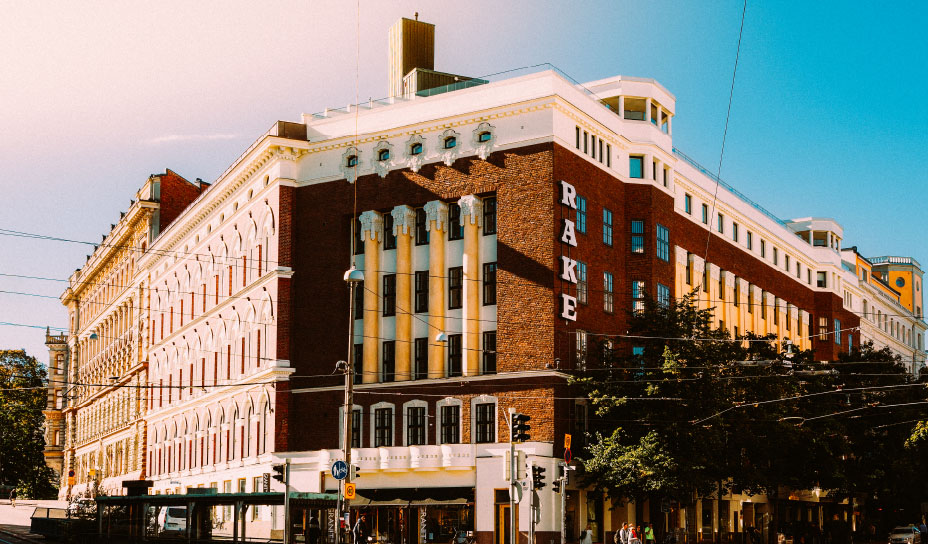
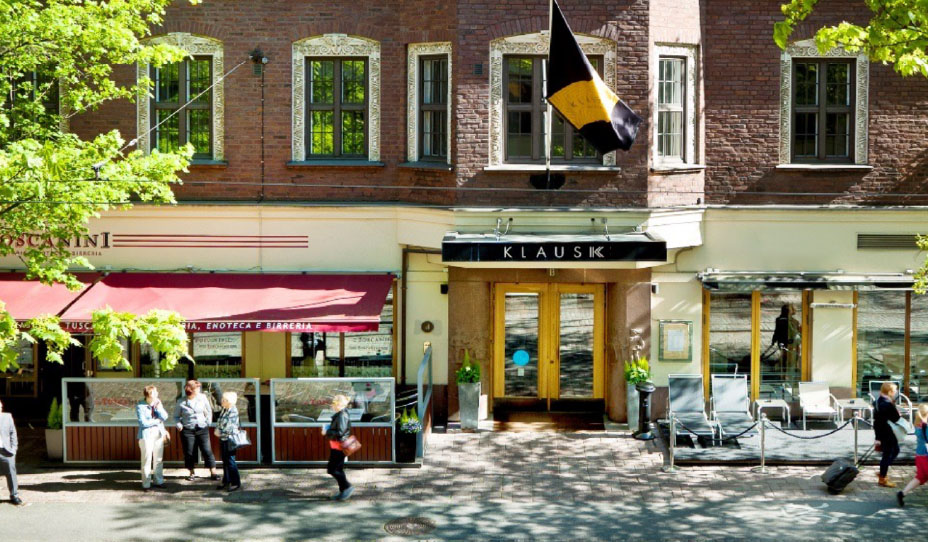
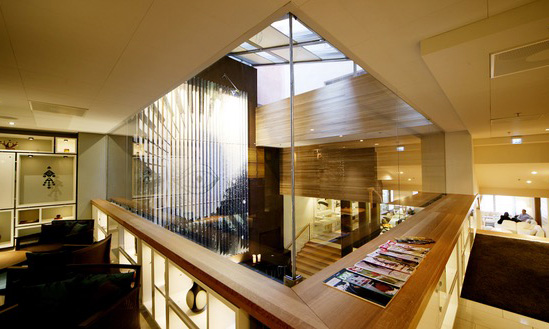
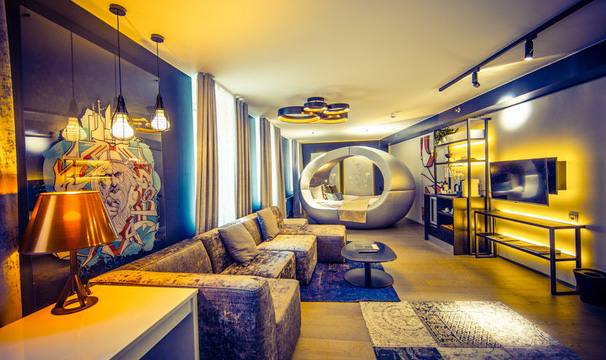
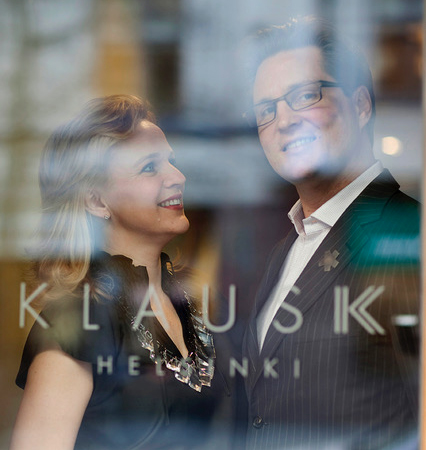
The company decided to focus on Real Estate business (Rake Real Estate Oy), Import business (Labnet Oy and Rake Trading Oy) and Hotel operations (Hotelli Klaus K).
Real estate business: The beginning of the millennium was a busy time for the newly established real estate arm, Rake Real Estate Oy. To ensure competitiveness and attractiveness of the Erottaja area, property owners in the area, led by Rake, decided to build a 450-space parking garage. Erottaja Parking, located under Rake Building, was completed in 2003.
In the early 2000’s, Rake started acquiring shares in the neighboring property, Bulevardi 6 Oy. Full ownership of the property (approx. 4,200 rentable square meters) was achieved in 2012. In 2010–11, Bulevardi 6 underwent a comprehensive renovation. Thus, the entity Bulevardin Kulma, consisting of properties at Erottajankatu 4, Bulevardi 2–4 and Bulevardi 6, was created.
As the long-term lease of Hotel Klaus Kurki terminated at the end of 2004, an extensive renovation of the hotel began led by architect Sarlotta Narjus (SARC). All of the hotel’s 139 rooms were renovated into four different room types and new restaurant concepts were created: Trattoria Toscanini, Finnish fine dining restaurant Ilmatar, restaurant Filmitähti and Ahjo night club. Completely renovated, Finland’s first Design Hotel Klaus K reopened in November 2005.
As the hotel gained popularity, it was decided to increase the number of rooms in the hotel, by converting offices and attic spaces on the top two floors into hotel rooms. Klaus K’s Sky Lofts, 32 new rooms, were completed in 2014.
Import business: In the early 1980’s, as part of Rake’s diversification efforts, a laboratory import company Plastic Trade and later food ingredients company Baltimek Oy, were acquired.
The objective was to build another significant business area for Rake from imports through acquisitions and organic growth. Food industry business was expanded by establishing a joint venture in the Baltics, Balfi Oü. To improve operational efficiency, Plastic Trade and Rake Trading were merged into one company, Labnet Oy, in 2005. In 2010, Labnet acquired laboratory products import company Biofellows Oy.
Regardless of continuous efforts and investments, the Import business could not grow to meet the company’s objectives. Divestment of the food additives business was completed in 2012 and the laboratory business in 2015.
Hotel business: As the hotel’s long-term lease was nearing its end, negotiations for a new lease and planning of a new hotel concept began in 2002. Lifestyle Hotels Finland Oy, a joint venture between Next Hotels (70%) and Rake Oy (30%), was chosen as the hotel’s new tenant and operator.
The new vision was to complement Helsinki’s limited hotel offering by introducing a new internationally acclaimed concept. Norwegian interior designer Erik Nissen Johansen (Stylt Trampoli) created the Kalevala-themed interior of the renovated Klaus K hotel. Klaus K introduced a completely new hotel category to Finland, Lifestyle & Design hotels, and it was invited as the first Finnish hotel into the prestigious Design Hotels marketing consortium.
In 2007 Rake acquired Next Hotels’ shares, making Lifestyle Hotels Finland Oy 100 %-owned by Rake Oy.
The hotel’s operations were managed by Mia Cederberg-Skvorc (4th generation) and her husband Marc Skvorc, who had gained broad experience from different hotels in the USA. The hotel and restaurant business, started in 1938, had once again returned to the company’s own hands, to the great joy of the family.
Under the leadership of Marc and Mia, Hotel Klaus K was very successful and gained many followers in Helsinki’s Lifestyle hotel market segment. Klaus K’s number of rooms increased to 171 rooms in the extension completed in autumn 2014.
Kämp Collection Hotels
Private Equity investment company Capman acquired Kämp Hotel and four GLO hotels at the end of 2013 with the aim to develop a chain of the highest quality hotels in the capital region. In the spring of 2014, Rake decided to sell the shares of Lifestyle Hotels Finland Oy, i.e. the business of Hotel Klaus K, to Kämp Collection Hotels. As a prerequisite for the transaction, Rake was invited to be one of the three main owners of the hotel entity.
Kämp Collection Hotels expanded through acquisitions (Hotel Haven, Hotel Fabian and Hotel Lilla Roberts) and by building a new Hotel St. George. Over the course of five years, the company’s turnover grew from approx. 30 M€ to almost 100 M€ and its market share of Helsinki’s highest quality hotels exceeded 80%. In October 2019, Kämp Collection Group’s shares were sold to Nordic Choice Hotels owned by the Norwegian hotelier Petter Stordalen, just before the devastating Covid-years.
2020's: Real Estate ownership and Financial Investments
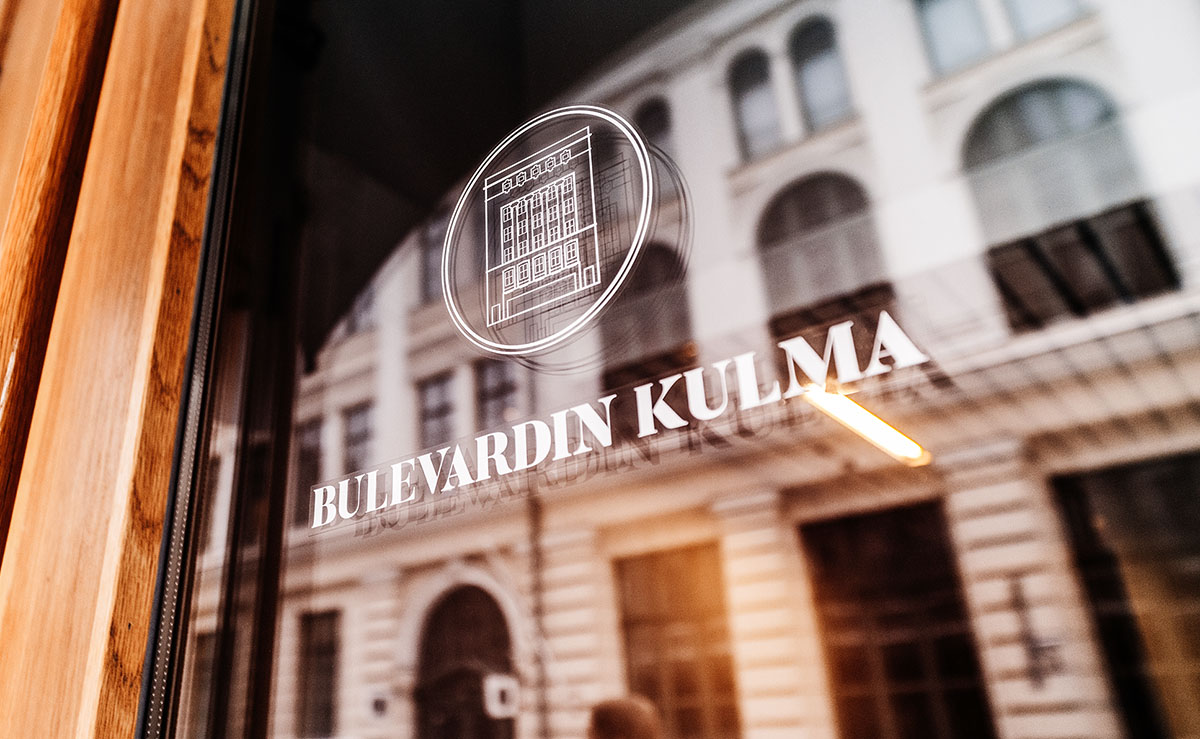
In the new decade, a new phase in Rake’s history has begun, when we focus on owning, leasing, and developing our properties at Bulevardin Kulma.
We have also established Rake Investment Office (RIO), whose mission is to create another business area for us from financial investing. Professional mindset, international focus, corporate responsibility, and a long investment horizon guide our investment activities.
In addition to this, we are progressing on the path of active ownership. Our goal is to find companies/businesses with good growth potential that are also relevant for the next generation of customers, employees, and owners.